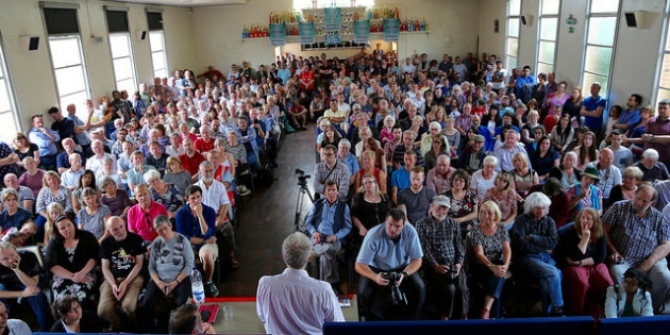 Chronic pain can affect every part of a person’s life, but exactly how that pain feels can be very hard to convey. Jen Tarr explains why the Communicating Chronic Pain project has been exploring alternative ways to “talk” about pain.
Chronic pain can affect every part of a person’s life, but exactly how that pain feels can be very hard to convey. Jen Tarr explains why the Communicating Chronic Pain project has been exploring alternative ways to “talk” about pain.
Imagine being in pain every day. You find it difficult to work, sleep or socialise. Your family and friends are tired of hearing how bad you feel. Sometimes you think they don’t believe you. You’re on multiple medications, all of which have side effects. Your doctor isn’t sure why you’re in so much pain, and you struggle to communicate the impact it is having on your life.
Millions of people around the world experience similar scenarios every day. In the UK, around 10 million people are regularly affected by chronic pain, leading to significant time off work and impact on their quality of life, according to the British Pain Society. In the United States, the American Academy of Pain Medicine estimates that chronic pain affects around 100 million people: more than cancer, diabetes and coronary heart disease combined.
Chronic or persistent pain is defined as pain that lasts longer than the normal time it takes for tissue to heal, which is generally considered to be three months in the absence of other criteria. There is no objective test to discover whether someone is in pain or how much pain they are suffering, so clinicians rely on self-reporting, through numerical ratings (“on a scale of 1 to 10, how strong is your pain?”) and/or a standardised list of descriptive words and line drawings of where the pain is, such as the McGill Pain Questionnaire. Pain, however, is challenging to describe, and research on pain communication shows that both patients and clinicians are often dissatisfied.
Against this background, as researchers in the LSE Department of Methodology we have been examining the ways in which chronic pain sufferers might express themselves using non-verbal and non-textual methods of communication, such as images, maps, drawings, sounds, physical theatre and memes. Through evaluating new ways of communicating about pain, we have aimed to help people in pain communicate their experience using strategies that don’t rely simply on language.
The first part of our research explored how people share non-verbal chronic pain communication online. Through an examination of pain-related images on the photosharing site Flickr, memes on Tumblr blogs and videos on YouTube, we analysed networks produced by people with pain and the strategies they use to express their experiences.
We then held a series of arts workshops in London with people with pain, interested clinicians and carers. The first workshop paired a neuroimaging expert with a visual artist to explore ways of imaging and imagining the body in pain. The second involved producing digital photographs of objects representing pain and thinking about the transformation of that pain. The third workshop focused on sound, with participants bringing in sounds that they felt represented their experience and relationship to pain; we then “treated” these sounds, putting them together to create recorded soundscapes. The final workshop explored how physical spaces relate to pain, through a series of exercises involving images, drawings and physical theatre.
We found that while non-textual forms of pain communication don’t replace language, they do offer opportunities to communicate more evocatively and with more precision. Images and memes found online can be both pointed and poignant. The experience of producing something creative together in the workshops opened up dialogue and enabled people to step outside their usual roles in relating to their own and others’ pain. Participants commented that it was “excellent to learn new concepts and ideas – the power of producing a photograph and the release it gives you is limitless”; that they would remember “that I don’t have to think of pain as individual and incommunicable”; and that “sound is a useful way to communicate – importantly because it teaches you to listen!”
Images that came out of the project and more materials can be seen, watched and heard at Communicating Chronic Pain.
Note: This article was originally published on LSE Connect and gives the views of the author, and not the position of the British Politics and Policy blog, nor of the London School of Economics. Please read our comments policy before posting.
 Jen Tarr is Assistant Professor of Research Methodology in LSE’s Department of Methodology, and principal investigator on the Communicating Chronic Pain project. Her co-investigators were Dr Elena Gonzalez-Polledo, Dr Flora Cornish and Dr Aude Bicquelet.
Jen Tarr is Assistant Professor of Research Methodology in LSE’s Department of Methodology, and principal investigator on the Communicating Chronic Pain project. Her co-investigators were Dr Elena Gonzalez-Polledo, Dr Flora Cornish and Dr Aude Bicquelet.







